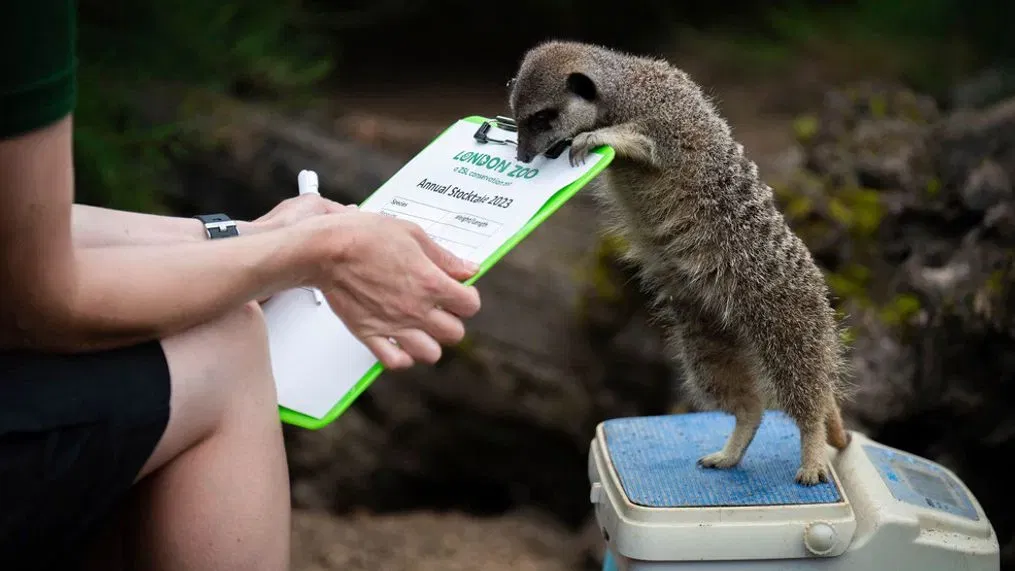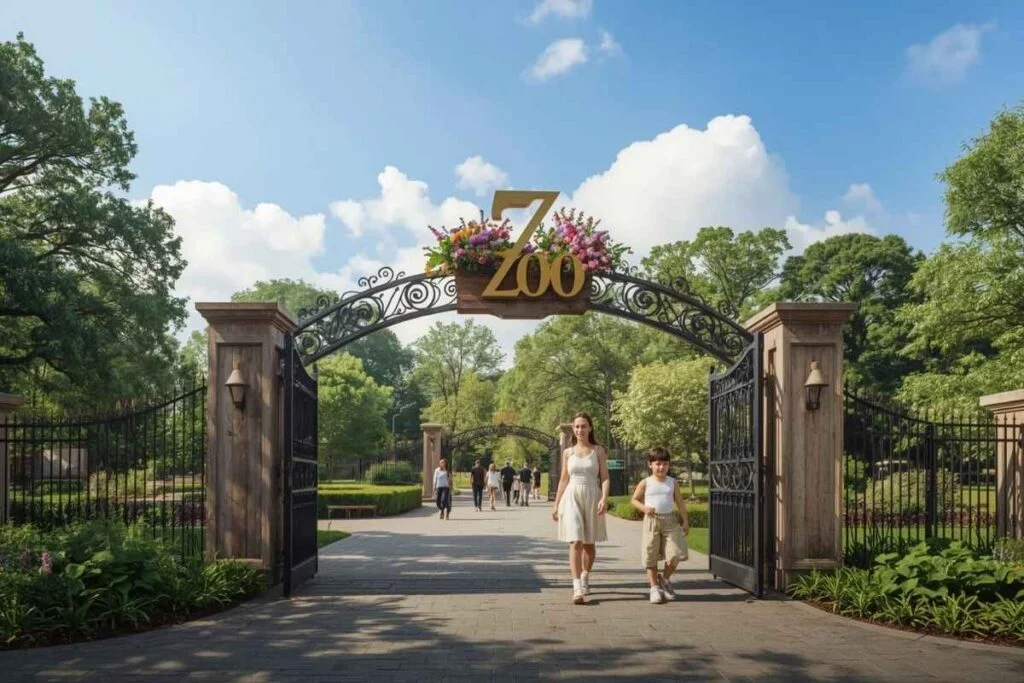The term “Zooskooñ” represents a groundbreaking shift in how we think about zoological institutions. It signifies a move away from traditional animal displays toward holistic environments focused on conservation, sustainability, and animal welfare. This concept blends the familiar idea of a “zoo” with an innovative, almost mystical element suggested by “skooñ,” symbolizing a deeper, more conscious connection to the natural world.
It is more than just a new name for a zoo; it’s a transformative philosophy. It integrates cutting-edge technology, ethical principles, and global collaboration to create sanctuaries where animals thrive and people learn. This article explores the core principles, its impact on conservation, and what it means for the future of wildlife preservation.
Table of Contents
What is Zooskooñ?
At its heart, it is a model for the next generation of zoos. It redefines the purpose of a zoological park from a place of entertainment to a center for ecological responsibility. The core mission is to build sustainable habitats that mirror natural ecosystems, prioritize animal well-being, and actively contribute to global conservation efforts.
The concept emerges from a growing public concern over the ethical implications of keeping animals in captivity. It addresses these concerns by creating expansive, enriching environments that allow animals to exhibit natural behaviors. It’s a holistic approach that combines science, ethics, and education to foster a respectful coexistence between humans and wildlife.
Also Read This: Imsgtroid: The All-in-One Productivity App vs. Viral Myth
The Pillars of the Philosophy
This model is built on several key principles that guide its operations, design, and mission. These pillars ensure that every aspect of the institution is aligned with its core values of sustainability and ethical care.
1. Ethical Animal Welfare
Animal well-being is the top priority in the framework. This goes beyond providing basic food and shelter. The focus is on creating conditions that allow animals to flourish mentally and physically.
- Naturalistic Habitats: Enclosures are designed to be large, complex, and environmentally rich, mimicking the animals’ native homes. This encourages natural behaviors like foraging, climbing, and socializing.
- Behavioral Enrichment: Staff provides a variety of stimuli, such as puzzles, new objects, and varied feeding schedules, to keep animals engaged and prevent the stress often associated with captivity.
- Minimal Human Interference: While human care is essential, interactions are designed to be as non-intrusive as possible, reducing stress and allowing animals to live more naturally.
- Proactive Veterinary Care: A team of expert veterinarians focuses on preventative medicine and provides immediate care for rescued or injured animals.

2. Advanced Sustainability Practices
It facilities are designed to be models of environmental sustainability, minimizing their ecological footprint and promoting green practices.
- Renewable Energy: Solar panels, wind turbines, and other renewable energy sources are used to power the facility.
- Eco-Friendly Materials: Habitats and buildings are constructed with sustainable and recycled materials.
- Water Conservation: Rainwater harvesting systems and water recycling programs reduce water consumption.
- Zero-Waste Initiatives: Comprehensive recycling, composting, and waste-reduction programs are implemented to minimize landfill contributions.
3. Conservation and Biodiversity
It is a proactive force in the fight against biodiversity loss. It works on local and global scales to protect endangered species and restore ecosystems.
- Breeding and Reintroduction: The facilities participate in carefully managed breeding programs for endangered species, with the ultimate goal of reintroducing them into protected areas in the wild.
- Global Partnerships: It collaborates with leading conservation organizations like the World Wildlife Fund (WWF) and the International Union for Conservation of Nature (IUCN) to support worldwide conservation projects.
- Genetic Research: Scientists study animal genetics to maintain healthy and diverse populations, both within the facility and in the wild.
The Role of Technology in Zooskooñ
Technological innovation is a cornerstone of this concept. Advanced tools are used to enhance animal care, improve sustainability, and create immersive educational experiences for visitors.
Technology for Animal Welfare
| Technology Application | Description | Impact on Animal Welfare |
|---|---|---|
| AI-Powered Monitoring | Cameras and sensors with AI algorithms track animal behavior, movement, and health metrics 24/7. | Enables early detection of illness or distress, allowing for swift veterinary intervention. |
| Smart Habitat Controls | Automated systems regulate temperature, humidity, and lighting to match an animal’s natural environment. | Creates a stable and comfortable living space, reducing environmental stress. |
| 3D Printing | Used to create custom-designed enrichment tools, prosthetic limbs for injured animals, and complex habitat structures. | Provides tailored solutions for individual animal needs and supports rehabilitation efforts. |
| Acoustic Monitoring | Microphones record and analyze animal vocalizations to assess social dynamics and emotional states. | Offers deeper insights into animal communication and well-being. |
Technology for Visitor Engagement
It uses technology to educate the public without disturbing the animals.
- Virtual Reality (VR): VR experiences allow visitors to “enter” an animal’s habitat, offering an up-close look at their lives in a way that is safe for both humans and animals.
- Augmented Reality (AR): Visitors can use their smartphones to see digital overlays of information about the animals and their ecosystems as they walk through the park.
- Citizen Science Apps: Mobile apps encourage visitors to participate in data collection, such as recording animal behaviors or identifying local plant species, contributing directly to research efforts.

Education and Community Engagement
A primary goal of it is to inspire a new generation of conservationists. The educational programs are designed to be engaging, informative, and impactful.
- Guided Educational Tours: Expert-led tours focus on conservation stories, animal behavior, and the importance of sustainability.
- Interactive Exhibits: Hands-on displays and digital exhibits explain complex ecological concepts in an accessible way.
- Community Programs: It partners with local schools and universities to develop environmental curriculums and offer volunteer and internship opportunities. By involving the local community, it fosters a sense of shared responsibility for wildlife protection.
Challenges and Ethical Considerations
Despite its progressive approach, the concept is not without challenges and criticism.
- The Ethics of Captivity: Some animal rights advocates argue that no form of captivity, however benevolent, can replace the freedom of the wild. They contend that keeping animals in enclosures, no matter how large, is inherently unethical.
- Financial Feasibility: Building and maintaining large-scale, sustainable habitats with advanced technology is extremely expensive. Securing funding and ensuring long-term financial viability can be a significant hurdle.
- Balancing Priorities: There is a constant need to balance the needs of the animals with the expectations of visitors and the financial realities of running a large institution.
It addresses these criticisms through transparency, ongoing research, and a commitment to continuous improvement. The philosophy acknowledges that it is an evolving model, one that must adapt to new scientific findings and ethical standards.
The Future of Zooskooñ
This movement is poised to shape the future of zoological institutions around the world. As technology advances and the urgency for conservation grows, its principles will become even more relevant.
Future trends may include:
- Biotechnology: Advancements in gene editing and cloning could play a role in preserving species on the brink of extinction.
- Global Network: The establishment of a global network of Zooskooñ-certified institutions could standardize ethical practices and facilitate international conservation efforts.
- Fully Virtual Experiences: As VR and AR technology becomes more sophisticated, entirely digital zoos could offer educational experiences to a global audience without keeping any animals in captivity.
It offers a hopeful vision for the future—one where zoos are no longer just collections of animals but dynamic centers of conservation, science, and education. It proves that human curiosity and a desire to connect with nature can coexist with a profound respect for animal welfare and a commitment to protecting our planet’s biodiversity.
Frequently Asked Questions (FAQ)
1. Is Zooskooñ a real place?
Zooskooñ is more of a concept or a movement rather than a single physical location. It represents a set of principles and standards for modern, ethical zoos. While no single institution may use the name “Zooskooñ,” many progressive zoos around the world are adopting similar philosophies and practices.
2. How is Zooskooñ different from a traditional zoo or wildlife sanctuary?
A traditional zoo may prioritize visitor entertainment, often with smaller, less natural enclosures. A wildlife sanctuary is primarily focused on rescuing and rehabilitating animals, often without public access. Zooskooñ combines the best of both: it provides a high standard of care like a sanctuary while also focusing on public education and scientific research, all within a framework of advanced sustainability.
3. What is the role of animal breeding in Zooskooñ?
Breeding programs in a Zooskooñ context are strictly for conservation purposes. The goal is to support the populations of endangered species, with the aim of reintroducing them to their natural habitats. Breeding is not done for commercial purposes or to simply produce more animals for display.
4. Can technology really improve an animal’s life in captivity?
Yes. Technology like AI-powered health monitoring and automated habitat controls can significantly improve an animal’s quality of life. These tools help caretakers detect problems earlier, provide a more stable environment, and understand animal needs on a deeper level.
5. How can I support the Zooskooñ movement?
You can support this movement by visiting and donating to zoos and aquariums that are accredited by major conservation organizations and demonstrate a strong commitment to animal welfare and sustainability. You can also educate yourself and others about the importance of conservation and make sustainable choices in your daily life.

Leave a Reply to Lizita2santo Instagram Jaricut: Your Guide – Infonest Cancel reply